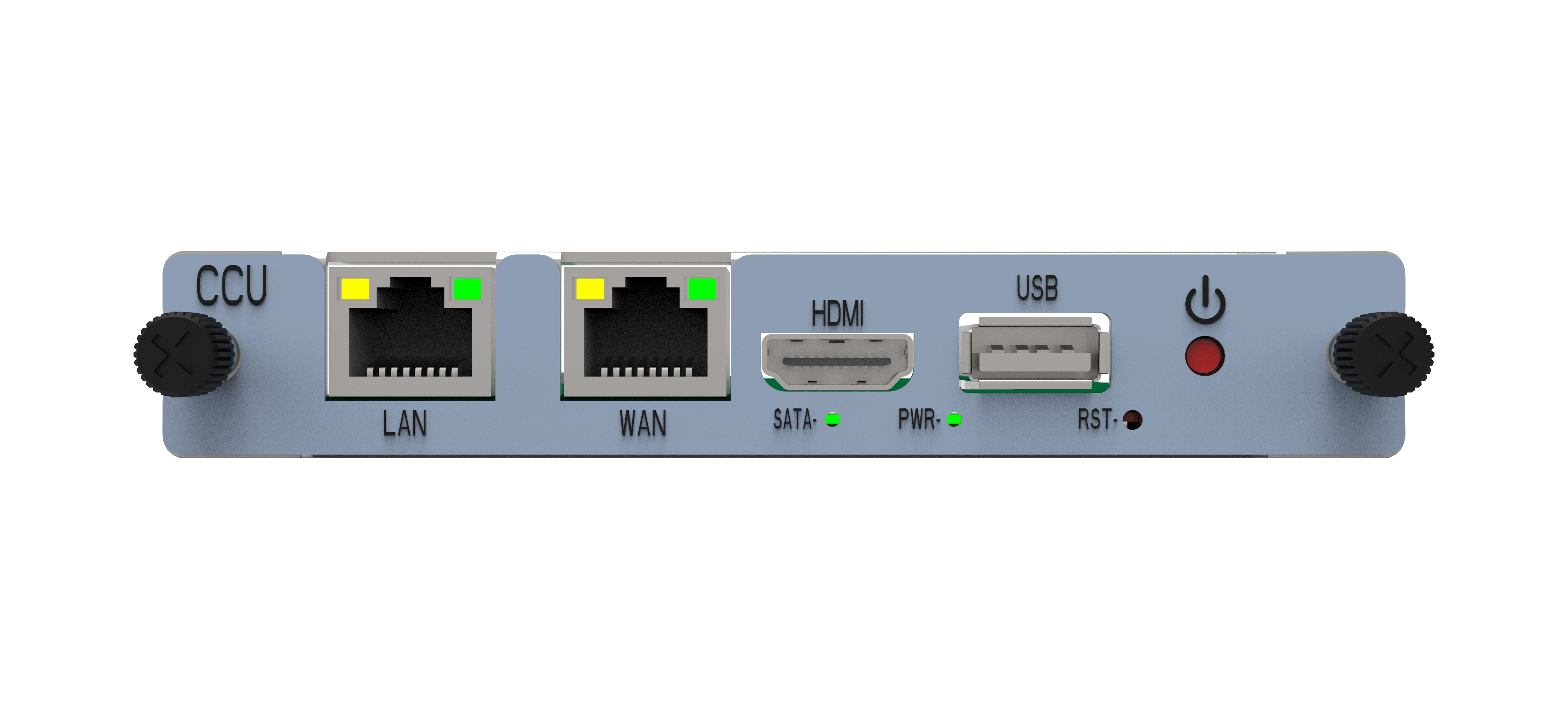CCU-N-BAYL is a main control board developed for VoIP applications, supporting Asterisk, Issabel, Elastix, FreePBX, VitalPBX, BrikerPBX, Yate™ and IPPBX/IVR and other open source software applications as well as PBX, firewall, IVR and voice gateway applications.
Main Feature
•Transport Protocol: UDP, TCP, TLS, SRTP
•DTMF: In-band, RFC2833, SIP INFO
•IP Services: Static IP, DHCP, VPN, Firewall, PPPoE, Bridge
•Support SIP and IAX2
•Web-based operator panel
•DISA (Direct Inward System Access)
•Call detail record (CDR) report
•Call recording, Call parking, call queues, Voicemail, Conference
•Echo canceller
•Callback support
•Flexible and configuration IVR
•Support for PIN sets
•Support for time conditions
•Support extension following
•Support ringing groups
•Support for video calls
•Channel usage report
Panel Appearance
The panel appearance of CCU-N-BAYL is shown in Figure 1.
Figure 1 CCU-N-BAYLN Panel Appearance

Note: The ETH1/ETH2/ETH3 network port of CCU is a Gigabit network port.
Performance Test
1.Testing Platform
CPU |
Main Frequency |
Memory |
Storage |
Operating System |
Asterisk Version |
Celeron N2930 Quad-Core Quad-Thread |
1.83GHz |
4G |
MSATA 16G |
Centos6.4 64-bit |
11.15.0 |
Related notes:
1. equipment with: Celeron N2930 motherboard through sip trunk docking test machine
2. Test data: test different codes, the maximum number of concurrent sip calls in the case of normal voice
3. Call rate: 1min per call round, 10s internal call delay, maximum number of initiated and stopped calls per second set to 30
4. Asteirsk using source code compilation, g723, g729 coding module using core2-sse4 64-bit so file
5. The performance screenshot is the output of WinSIP call hitting full moment using top command.
Calling process:
sip relay
Winsip --> Server A (Celeron N2930) ------------------>Server B(playback demo-instruct)
2.Test method
Prepare a test server B with Asterisk, WinSIP initiates a call to A (Celeron N2930) motherboard, which is relayed to Server B for playback via SIP trunk, and make the CPU in full speed working state before each test.
Set /sys/module/pcie_aspm/parameters/policy to performance, and use cpupower -c all frequency-set -g performance to make the CPU in full speed working mode.
CPU operating frequency:
cpupower -call frequency-info |grep "current CPU frequency"
3.Test results
Coding |
Number of concurrent |
Sound Quality |
Performance(Cpu Idle) |
Memory Usage(Mb) |
ulaw |
600 |
Clear voice with no noticeable lag |
19.0% |
743 |
g723 |
220 |
Clear voice with no noticeable lag |
9.1% |
549 |
g729 |
200 |
Clear voice with no noticeable lag |
9.8% |
539 |
4.Notes
1.In the test, the number of concurrent calls is gradually increased until the voice stutters after the call is full to determine the critical number of concurrent calls.
2.In the test to monitor the human ear to judge the sound quality, there are subjective differences, call the full softphone and then call all the way to listen to the voice, the voice is clear and no lagging phenomenon as the standard;.
3.Test process BIOS inside the power limit option has been removed, the test cpu in full speed work state.
Parent topic: Core Control Unit